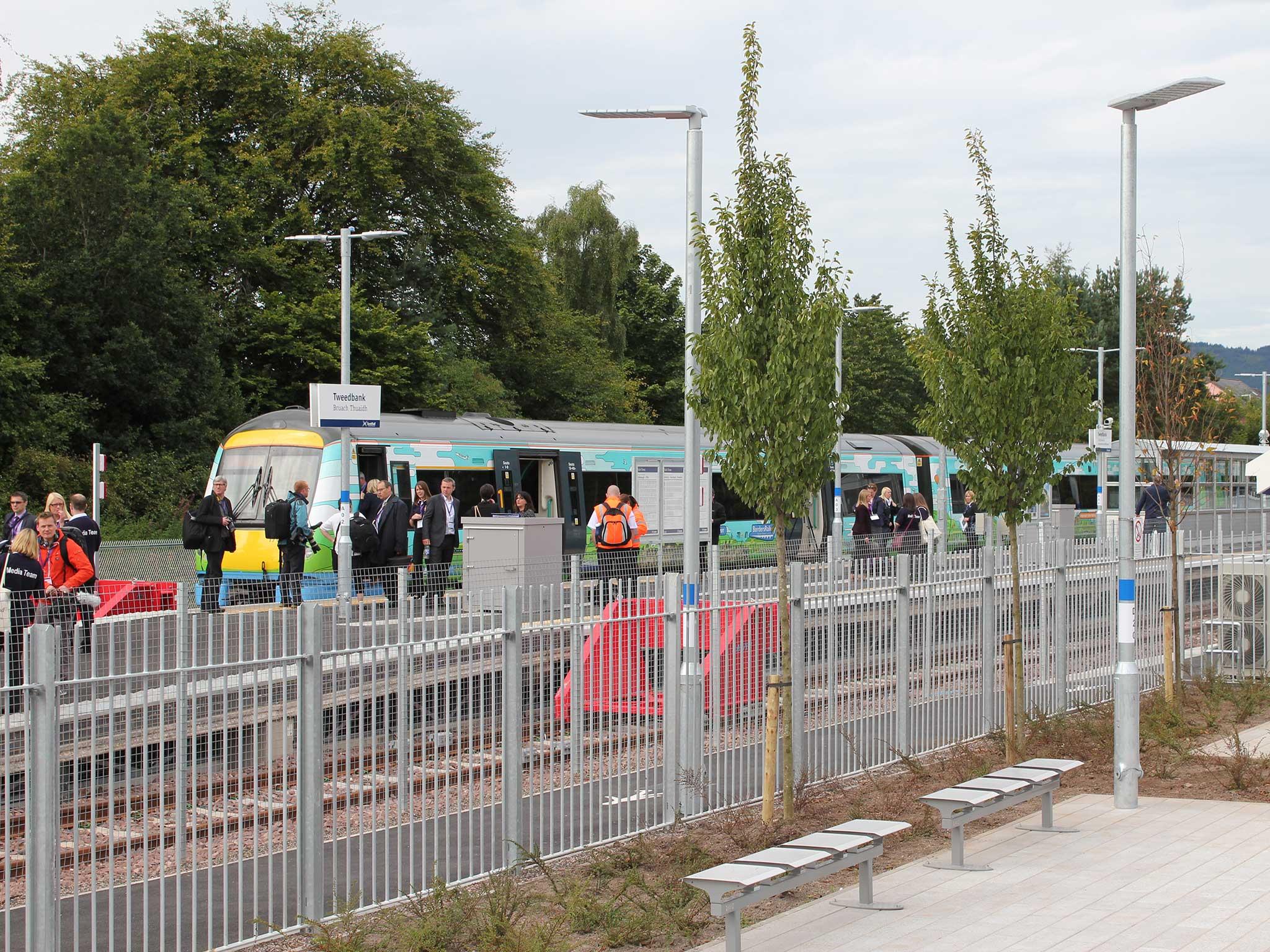Borders Railway: One year in, Britain’s newest line has been characterised by delays and disruption
Even during the best week’s performance, in March, fewer than half the trains arrived on time at Waverley station in the Scottish capital

The first year of Britain’s newest railway has been characterised by delays and disruption – blamed largely on poor planning for the £300m line.
Trains started running on the Borders Railway, which extends for 35 miles from Tweedbank to Edinburgh, on 6 September 2015.
Three days later, the Queen officially opened the line, on the day she became Britain’s longest-serving monarch. But Britain’s shortest-serving railway has had an annus horribilis ever since.
Even during the best week’s performance, in March, fewer than half the trains arrived on time at Waverley station in the Scottish capital. In the worst week, in December 2015, only one in eight trains arrived punctually in Edinburgh.
On more than half the days, at least one train has been cancelled, with one in six services axed during a week in early July.
The research was carried out by a campaigner for the line, Bill Jamieson. He has monitored the service from October until this week.
According to his data, the main cause of serious disruption – on 18 days – is failures by the train stock used, known as Class 158. During warm weather, when delivering full power on steep climbs, one engine can shut down due to overheating.
“It’s not as though we’ve had a warm summer here,” said Mr Jamieson. “The units were, if not failing, at least having serious problems at Falahill Summit, the highest point on the line.”
Nine days of serious disruption are blamed on signalling failures. Andrew Roden of Rail magazine believes that the main cause is water leaking into the axle counters, which relay information about trains passing. He said: “A fault with a telecommunications link was also amplified when the automated fault-finding system that should detect the locations [of the failure] also failed.”
Most of the line is single-track. As a result, a small issue can quickly trigger significant disruption. The original Carlisle-Edinburgh line was double-track throughout. It closed on the recommendation of the Beeching report in 1969, leaving the Borders as the only region of Britain without a rail service.
The issues have been exacerbated by the unexpectedly high numbers of travellers on the route, making “dwell time” on the platform longer than planned. Despite the poor timekeeping, many more passengers have used the line than were predicted during the planning process.
The Scottish Borders Council said that demand at Galashiels and Tweedbank stations had exceeded expectations by more than 600 per cent. Overall, around 22 per cent more travellers than anticipated are using the line.
David Spaven, a railway consultant and campaigner, said: “The largely single-track Borders Railway has proved to be a classic penny-wise, pound-foolish project.
“Ludicrously pessimistic traffic forecasts for the three Borders stations contributed to a supposedly poor ‘business case’ which in turn led to Transport Scotland cutting back the double-track requirement for the railway from 16 miles to just 9.5 miles. We are now reaping the whirlwind in terms of unreliability.”
British rail travel through the ages
Show all 30Mr Spaven, who is the author of Waverley Route: the battle for the Borders Railway, is demanding an inquiry to identify “exactly why we ended up with such a sub-optimal railway specification, based on hopelessly inadequate patronage forecasts.”
The familiar problem of staff shortage is blamed for severe disruption on 14 days. To run the full schedule requires train crews to work overtime, and fewer than expected have volunteered. In addition, staff sickness has been higher than anticipated.
A spokesperson for ScotRail Alliance said, “Borders Railway has been an extraordinary success. We are now providing people with an alternative way of travelling to work, to visit friends and family and to use for leisure.
“There have been some challenges and we’re determined to find the solutions that overcome them and see even more customers travelling on the line in year two and beyond.”
A scoping exercise is exploring the prospect of extending the Borders Railway to Carlisle, where it would join the West Coast main line. It would resurrect the entire line, and create the most direct link between Edinburgh and London.
Councillor David Parker, leader of Scottish Borders Council, said the passenger figures would “provide a boost to the business case for extending the line to Carlisle.”
Subscribe to Independent Premium to bookmark this article
Want to bookmark your favourite articles and stories to read or reference later? Start your Independent Premium subscription today.

Join our commenting forum
Join thought-provoking conversations, follow other Independent readers and see their replies